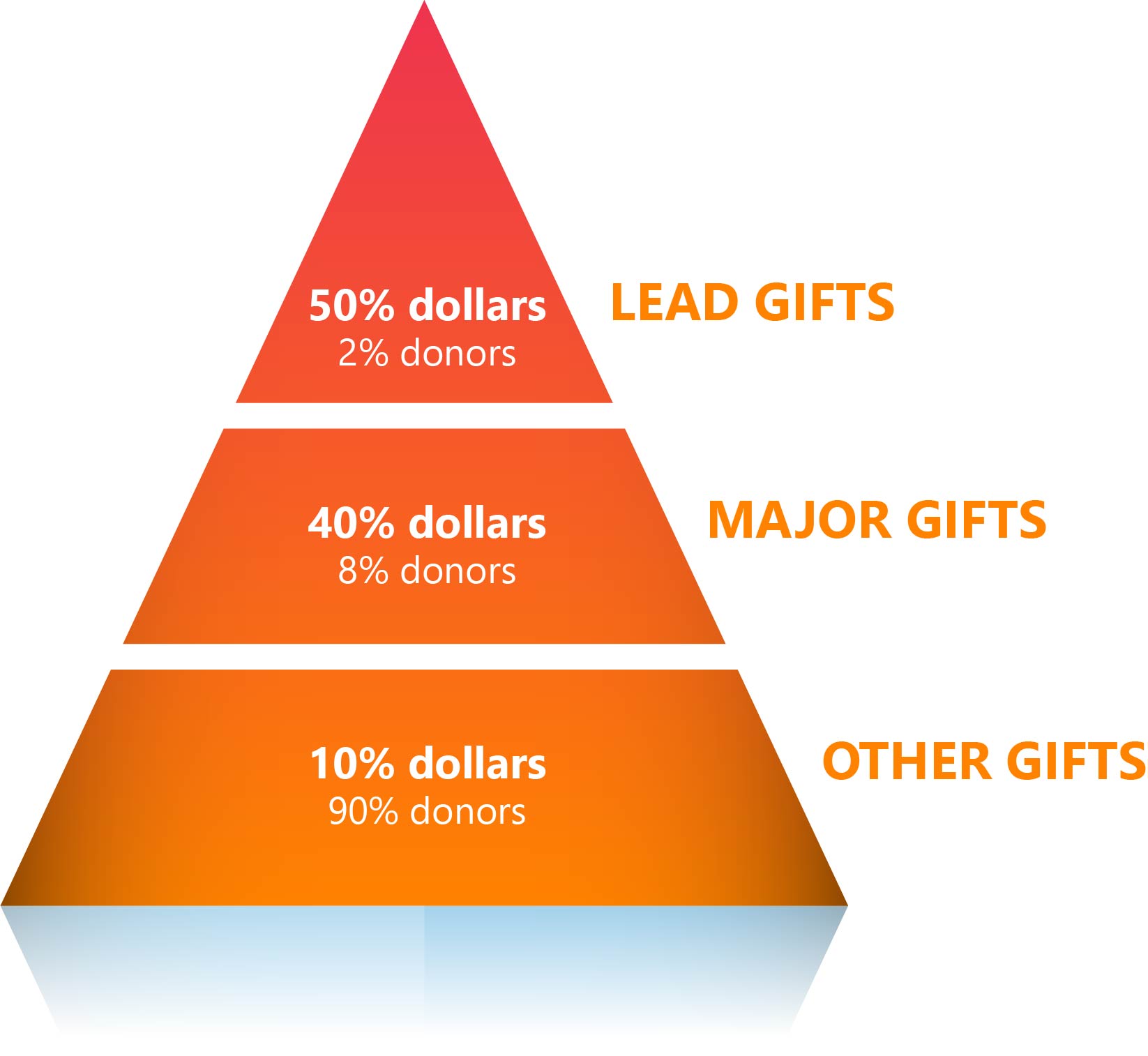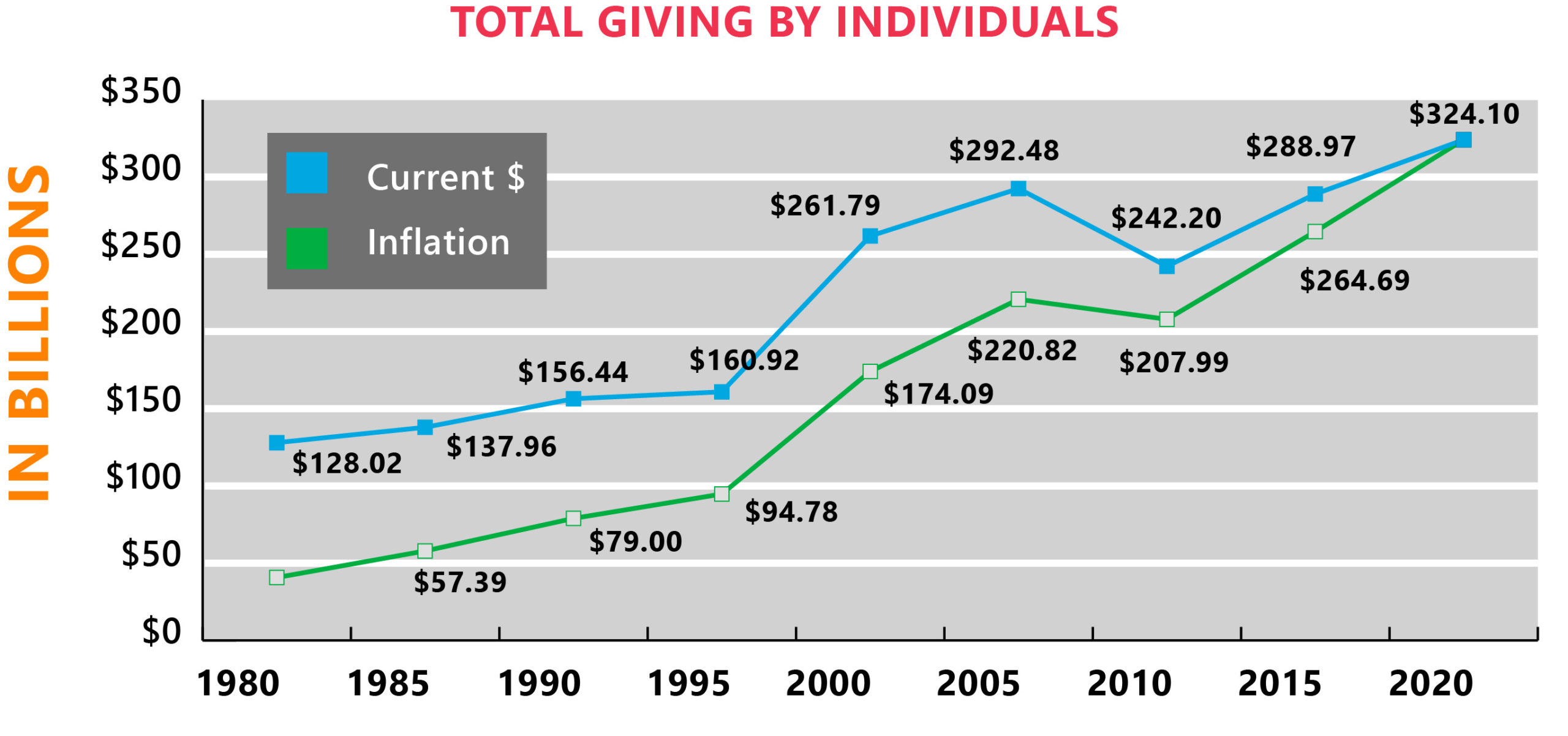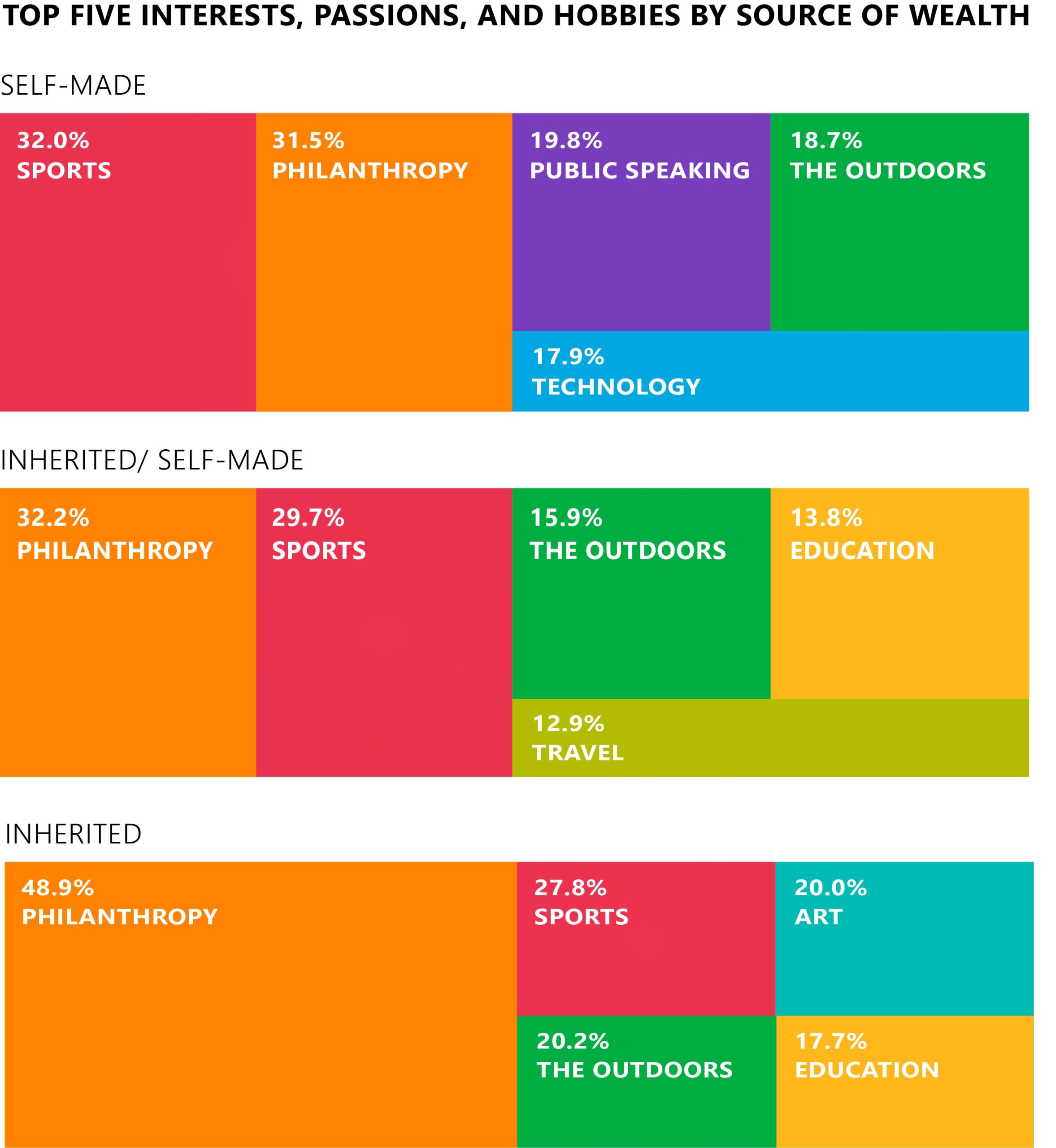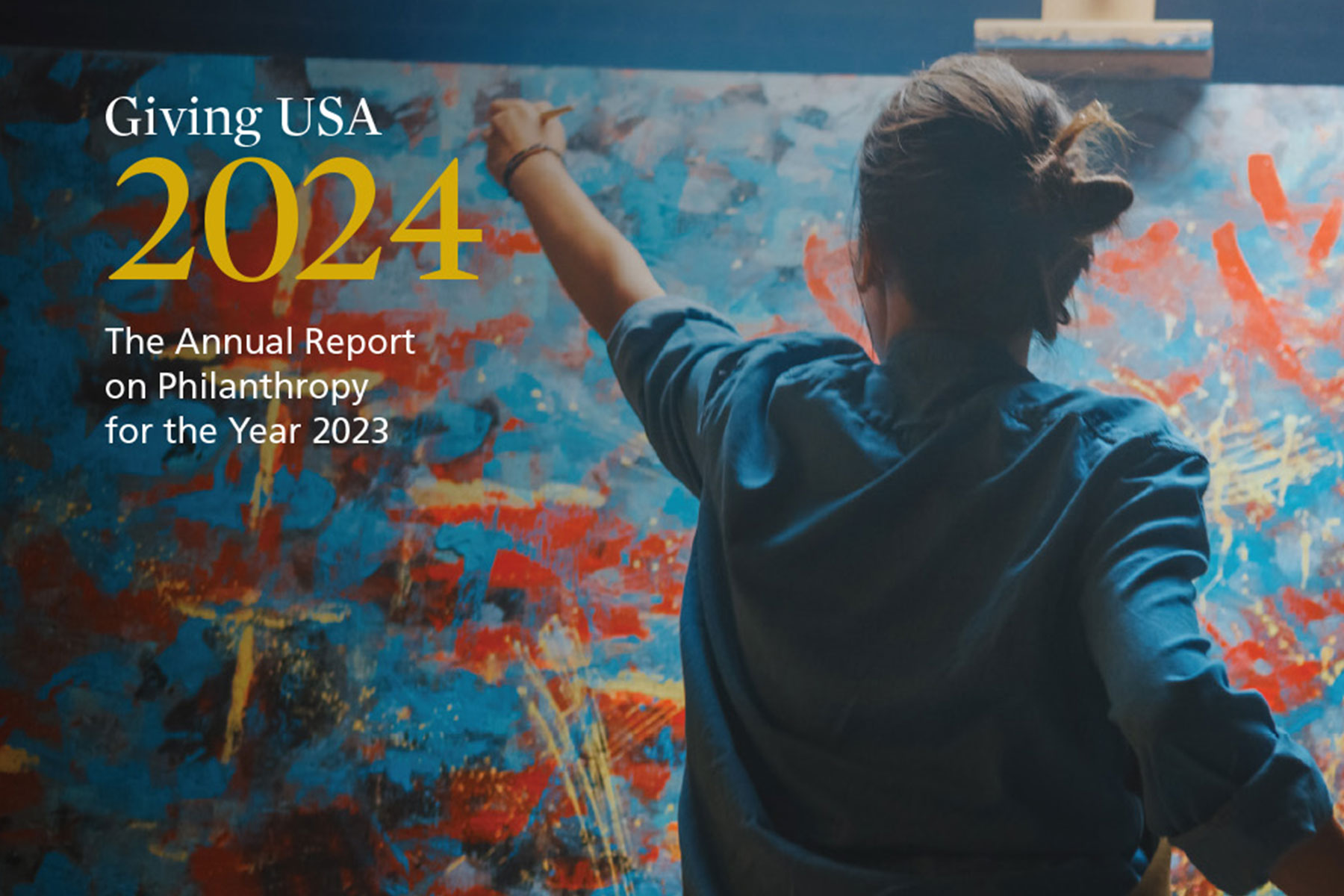A new era of fundraising is upon us, and both campaigns and donors have evolved.
The sea change has come about for a variety of reasons. Donors today are more sophisticated and are making more complex and blended gifts. Old money has given way to more first-generation wealth among donors, and this new breed often thinks differently about their philanthropy.
The competition for philanthropic largesse is intense and is sometimes more akin to a competitive sport. Getting donors’ attention—and holding it—can be a contest of its own among the fittest and better financed. There are now even more vehicles and novel approaches to communicating the story and making the case for support (and that’s on top of all the other messaging noise vying for attention), and donors no longer sit back and wait for information to be pushed out to them.
Download the Whitepaper
They can access real-time news and alerts on social media and gather information on their own. Fundraising has a greater dependence on larger gifts, and campaigns are now more often comprehensive in nature, with longer planning phases, shorter public phases, and minimal public launches. And on top of all that, many fundraisers are increasingly keen to see their organizations come up with big, bold ideas that attract transformational gifts.
In addition, what happens within campaigns has changed too, according to CASE Campaign Report:
- 90% of funds raised are from the top 10% of donors (the 80/20 rule no longer applies)
- Organizations raise 26% to 50% more being in a campaign (the focused effort reaps results)
- The average length of campaigns is now 7 to 8 years (up from 3 to 5 years not so long ago)
Not only are campaigns changing, but so too is the donor experience. Donors are increasingly looking for—and expecting— personalized interactions, an engaging experience, compelling content, transparent reporting, accessible information, and ongoing value. To wit, a recently released study, “Understanding How Donors Make Giving Decisions,” from the Indiana University Lilly Family School of Philanthropy indicates that “while researchers have long known that donors value information about the impact of their gifts, the new studies indicate that donors’ expectations of feedback about their gifts and the causes they support is increasing and becoming more sophisticated.”
 During a campaign, half of the funds raised will come from about 2% of an organization’s donors; another 40% will come from the next 8% of donors. The top 50 gifts are vital to the success of the overall campaign, while base giving, which is essential to building the future pipeline, creates broad engagement and fosters participation and
During a campaign, half of the funds raised will come from about 2% of an organization’s donors; another 40% will come from the next 8% of donors. The top 50 gifts are vital to the success of the overall campaign, while base giving, which is essential to building the future pipeline, creates broad engagement and fosters participation and
a sense of inclusion. (Source: CASE Campaign Report)
And the donors themselves? Here too an evolution has been afoot. As noted above, modern campaigns are primarily driven by major and leadership gifts. Although fewer Americans are giving to nonprofits, those who are doing so are giving more overall. According to Giving USA 2021, giving by individuals has grown in four of the last five years, totaling a record high $324.10 billion. In 2020, 69 percent of giving came from individuals, a 2.2 percent increase compared to 2019. Much of that increased giving is coming from high net worth (HNW, those with a net worth between $1 million and $30 million) and ultrahigh-net-worth (UHNW, those with a net worth of $30 million or more) individuals. Consider these facts for a moment—and what they mean for fundraising:
- In 1990, there were 66 billionaires in the US, and the wealthiest among them was worth $5.6 billion. Today, there are more than 600 billionaires in the US (over 2,700 in the world), and the richest among them is worth $177 billion.
- According to the World Ultra Wealth Report 2021, North America and Asia are home to the largest numbers of UHNW individuals. In the US specifically, San Jose, California, has the highest density of UHNW individuals, with one for every 727 city residents.
- According to a Milken Institute Center for Strategic Philanthropy report about the giving of UHNW individuals, “much needed capital remains accessible but unspent.” In 2018, only 36 percent of UHNW individuals in the world were engaged in philanthropy. Under 10 percent had made a charitable donation of $1 million or more. Almost $60 trillion in wealth will be transferred to the next generation, and an estimated $27 trillion of that amount is projected to go to charitable causes. Taken together, these evolutions have resulted in the UHNW donor being someone within reach of approaching but doing so requires an intentional and well-conceived approach.
As noted in the Giving USA 2021 report, giving by individuals achieved its highest total dollar amount to date, adjusted for inflation, but it comprised less than 70% of total giving for only the second time on record. UHNW and HNW individuals were responsible for the majority of gifts, with the top 10 donors giving almost $22 billion. The concentration of wealth has a significant impact on both philanthropic support and the vehicles used in charitable giving. (Source:
Giving USA 2021)
Philanthropy That Transforms
The potential to attract an UHNW donor is clearly appealing, for many reasons beyond the gift itself. Building a relationship with such donors likely opens doors to other similar donors, which then creates opportunities to pursue big ideas and evolutionary organizational change as well as build a bulwark against forces that could jeopardize the organization’s long-term vitality. Gifts from these types of donors are often transformational
for an organization. Some working industry definitions found with a simple Google search are useful here:
- Transformational gifts spark exponential impact and have “a unique capacity to alter the programs, perceptions, and future of an organization.”
- Transformational philanthropy is an approach to development that enables both nonprofit leaders and entrepreneurs to develop meaningful and effective ways to work together to solve 21st-century challenges.
- High-impact philanthropy is characterized by a focus on achieving social impact and the use of evidence to identify problems and develop solutions.
- In venture philanthropy, the investor focuses on maximizing social impact, helping charities to scale and make the most of their funding. These funds come in the form of grants or start-up funding. Venture philanthropy is typically practiced by large charitable foundations or venture philanthropy organizations.
Combining the above definitions culminates in this description: A gift that reaches the threshold of transformational is one that helps propel an organization onto a new trajectory, synthesize disparate ideas into a viable project, or even coalesce people and projects around a grander vision than the individual components. When the organization’s leaders are able to lay out a vision for the gift that aligns with the donor’s passion and ambition, then the magic happens.
Who are the Ultra-Wealthy
The ultra-wealthy constituency is increasingly of interest to fundraisers. According to Wealth-X’s 2022 Ultra High Net Worth Philanthropy report, the global UHNW population grew 1.7 percent in 2020 to a total of 295,450 ultra-wealthy individuals. This was despite the disruption of the pandemic, volatile capital markets, and the
deepest contraction in world economic output for a generation. The net worth of the entire UHNW population totaled $35.5 trillion in 2020.
The ultra-wealthy accounted for 36 percent of all global giving last year, with an average gift of $590,000 per individual. (In the US, UHNW philanthropy accounts for 20-30 percent of all giving.) The growth in giving by the ultrawealthy (4.1%) outpaced that of non-UHNW individuals (2.9%). Education is the most popular charitable cause among those living in North America, Europe, and Asia. Arts and culture is the second most popular charitable cause of UHNW individuals in North America and Europe,
while in Asia, healthcare and medical research ranks second.
The Wealth-X 2021 report noted that UHNW individuals with inherited fortunes tend to have a greater interest in philanthropy and art. Meanwhile, technology ranks in the top five interests only among the self-made. All three wealth source groupings—inherited, inherited/ self-made, and self-made—have an interest in sports, philanthropy, and the outdoors.
Engaging UHNW Donors
To ensure your communication efforts to engage with the ultra-wealthy hit the mark, here are some fundamentals to take into account.
Ensure You Have a Big Idea
As with any fundraising, having a clear, compelling case for support is a crucial step in the communications effort. Piquing the interest of UHNW individuals often starts with having a transformative idea, one focused on a pressing problem in society or in the world that the donor is passionate about and wants to help solve. The right big idea may not only pique the interest of individuals already in your pipeline but may very well attract those unfamiliar with your organization yet eager to solve that specific problem and keen to collaborate with someone to make it happen.
For the UHNW population, “Large scale philanthropy is almost like starting a business,” says Carol Kroch, the national director of philanthropic planning for Wilmington Trusts, in “When the Ultra-Wealthy Give, It is ‘Almost Like Starting a Business.’” In that same article, Beth Renner, head of philanthropic services for Wells Fargo Private Bank, explained that while the high-net-worth population might donate to a food bank, for example, their ultra-wealthy counterparts might be involved in tackling the
larger issue of food insecurity. Compared to mass donors or even high-net-worth donors, the ultra-high-net-worth population tends to leverage their social capital—their reputations and business track records—in addition to their own private funds, to find solutions to causes about which they are passionate.
Identify a Champion
Most organizations don’t have an UHNW donor in their pipeline. Engaging with an ultra-wealthy individual often means identifying areas of commonality and then finding people you know who can make connections to get you to that person. Doing this successfully means being proactive but realizing the effort is all about the long game. You’ll need to plan for marshalling your contacts to make introductions, champion your cause, and maybe even help with the pitch. Your champions are an invaluable source in this effort, and that personal connection will be critical in your face-to-face (or virtual)
communications.
Design Campaigns for One
A singular focus is what you’ll need to pursue a relationship—and ultimately, a gift—from an ultra-wealthy individual. To be successful, it’s best to develop a fundraising strategy and strategic communications plan tailored specifically to an individual. You’ll need to tailor the key messaging (which needs to be concise and compelling), the data points to make your case (and these need to be convincing), and the tactics you employ. You’ll need to think about the timing of your messages and who and how those should be delivered. Your plan needs tactics designed for warming, nurturing, asking, and stewarding. Your homework needs to include not only prospect research and due diligence, but the important communications task of regularly monitoring social media about a donor’s passions and pursuits so you can adjust your strategy and messaging. The most brilliantly written case alone won’t suffice; you’ll need an individualized and highly personal campaign.
One more thing to include in your plan—communications to the individual’s influencers (e.g., family members, wealth advisors). Decisions about large-scale philanthropy often involve several family members, and wealth advisors are often sought out before those decisions are made. A Milken Institute report highlights that wealth advisors are not used to their fullest capacity in terms of advancing UHNW philanthropy. “Wealth advisors make recommendations based on ease and tax optimization, not on their clients’ philanthropic goals and desired impact. Since UHNWIs first turn to these professionals for guidance on their philanthropy, the opportunity exists to educate and harness the influence of financial advisors to help scale strategic philanthropic giving.” Be sure to include strategies and tactics to target the important influencers to the UHNW donor you are seeking to engage. And be sure that your relationship-building strategies (an oft overlooked part of a communication plan) include connecting the donor with your organizational leaders and change makers.
Focus on Impact … on Steroids
The ultra-wealthy think differently about their philanthropy. It’s about making an investment to solve societal and global problems (think Bill Gates’ focus on eradicating malaria), and in some cases, equipping those best able to solve problems and address needs with the resources to do so (or as MacKenzie Scott puts it, “… we are governed by a humbling belief that it would be better if disproportionate wealth were not concentrated in a small number of hands, and that the solutions are best designed and implemented by others.”). Scott’s so-called catalytic philanthropy has gone to numerous organizations worldwide, mostly focusing on gender and racial equity. Most donors today want to know about the impact of their giving, to know how their gifts were used and to what end. That perspective is amplified for the UHNW
donor who thinks about their philanthropy as an investment—as a business venture, if you will.
They are looking for a partner in their pursuit to solve problems and bring about not just incremental but transformative change and witness the impact firsthand. They want to share the credit for bringing the vision to fruition, right alongside the nonprofit they financially support in the effort. Thus, it’s critical that your ongoing stewardship focus on impact while sharing credit with the donor for the discovery and problem solving.
With Bold Thinking and Intentionality, Transformation is Possible
Our world today faces so many daunting challenges. Climate change, loss of biodiversity, destruction of natural resources, widespread, intractable poverty, lack of education, food and water insecurity, inequality, and racial and social injustice are among the most pressing (and some would say existential) challenges that affect the sustainability and vitality of humanity and our planet. Moonshot thinking, transformational philanthropy, and collaboration are needed if there is any hope of solving these challenges.
There is a small but viable audience of the ultrawealthy who can provide that transformation if so inspired and inclined. Communicating effectively with the ultra-wealthy philanthropist will take strategy, intentionality, and the long view. Evidence abounds of the success of such focused efforts. The unicorns are out there, and transformation is possible. You just need the right message at the right time delivered to the right person—what effective communications have always been all about, only this time to a target audience of one.
Connect with Carole to learn more about how your organization can communicate to the philanthropic unicorn at carwidson@bwf.com.






